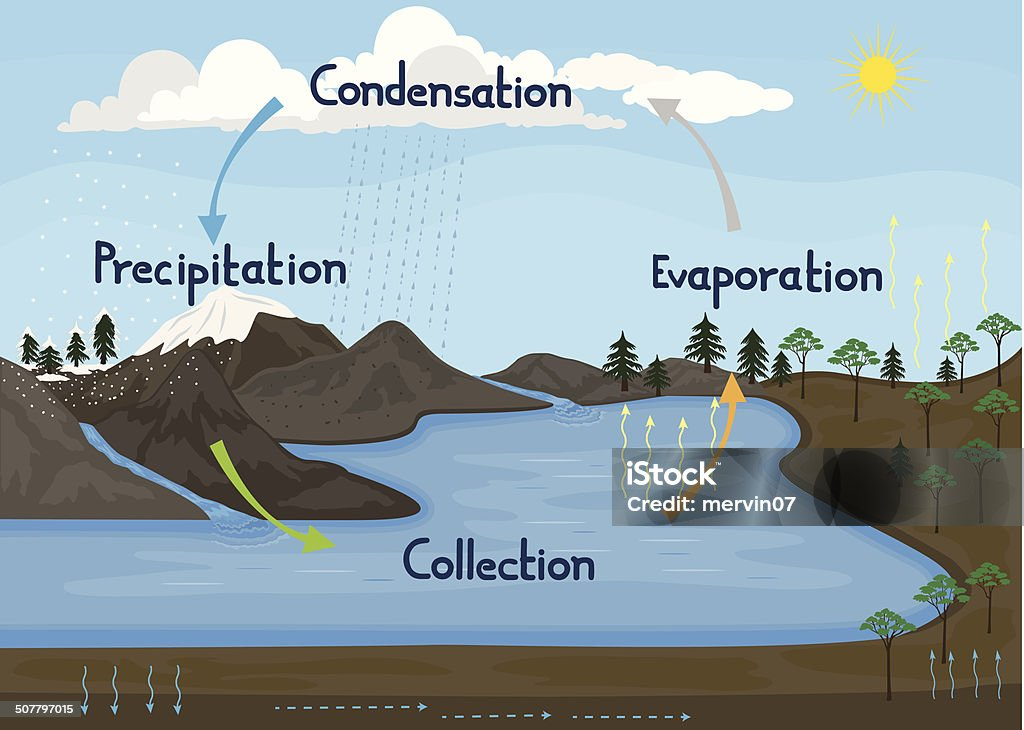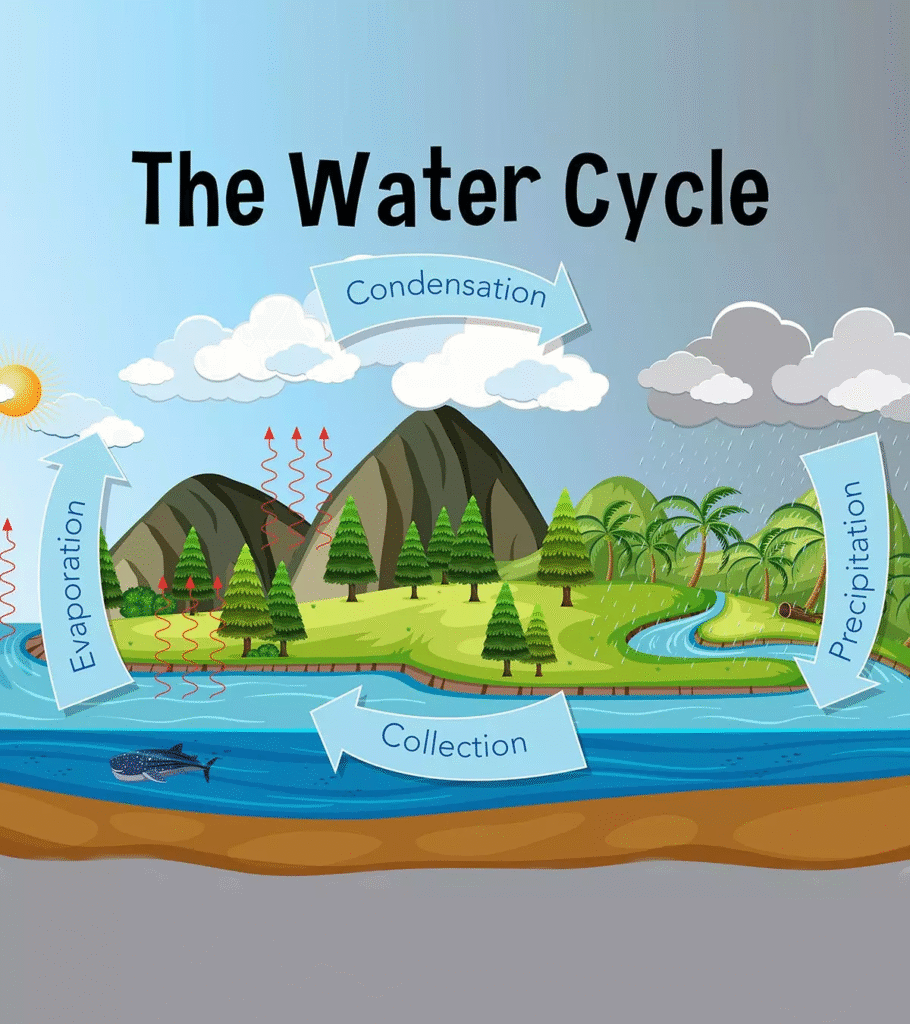Now Reading: How the Water Cycle Works from Start to Finish 2025
-
01
How the Water Cycle Works from Start to Finish 2025
How the Water Cycle Works from Start to Finish 2025

Table of Contents
Water is life. Without it, there would be no plants, animals, or people. But have you ever thought about where the water you drink actually comes from? Or how the same water moves through nature again and again? That’s where the water cycle comes in—a natural process that keeps Earth’s water moving and clean.
This cycle has no start or end. It works like a loop. But to understand it better, we break it into timelines or stages. Each stage is important, and together, they keep our planet balanced. Let’s take a deep dive into the water cycle timeline—step by step.
1. Evaporation: Where It All Begins

The journey begins with evaporation, when the sun heats up water from oceans, rivers, lakes, and even soil. This heat turns the liquid water into a gas called water vapor, which rises into the sky.
This stage is crucial, especially in hot regions like the UAE, where water evaporates quickly. But it’s not just the sea—transpiration (when plants release water vapor from their leaves) also plays a big part. Together, evaporation and transpiration are called evapotranspiration.
2. Condensation: Building Clouds
Next, the water vapor rises higher into the sky, where it cools down. Cold air makes the water vapor turn back into tiny droplets of liquid. This process is called condensation.
These droplets group together to form clouds. Think of it as nature’s way of collecting water in the sky. When the droplets become heavy enough, it’s time for the next step.
3. Precipitation: The Fall of Water
When the clouds get too heavy, the water falls back to Earth in the form of precipitation—rain, snow, sleet, or hail. This is how water returns to the ground.
The type of precipitation depends on the weather and temperature. In tropical or desert regions, rain is the most common form. Snow and sleet happen in colder climates.
4. Collection: Water Gathers Again
Once it reaches the ground, water collects in various places—rivers, lakes, oceans, and underground aquifers. This is called the collection stage.
Some of the water flows on the surface, called runoff, and some soaks into the ground, called infiltration. Water that goes underground becomes part of the groundwater system, which may take years or even centuries to return to the surface.
5. The Cycle Repeats
From here, the water is ready to start the journey all over again. The sun shines, evaporation begins, and the water cycle timeline continues, without a break.
Why the Water Cycle Timeline Matters
Understanding the water cycle is more than just school science. It affects weather, farming, and water supply. In countries like the UAE, where fresh water is limited, knowing how water moves helps in planning sustainable water use.
Key Benefits of Understanding the Timeline:
- Better water management: Helps governments make decisions about dams, irrigation, and reservoirs.
- Flood control: Understanding runoff and precipitation helps prepare for heavy rains.
- Drought preparation: Tracking evaporation and rainfall can warn about water shortages.
- Climate change studies: The cycle shows signs of change in weather and temperatures.
How Long Does the Water Cycle Take?
It depends on where the water goes. A drop of water may evaporate in minutes, stay in the cloud for hours, fall as rain in seconds, and remain underground for decades.
This variety makes the water cycle both fast and slow, short-term and long-term—all at once.
Human Impact on the Water Cycle Timeline
People also affect the natural water timeline. For example:
- Urbanization: Cities with lots of concrete prevent water from soaking into the ground, reducing groundwater recharge.
- Pollution: Dirty water from industries affects evaporation and collection stages.
- Climate change: Warmer air holds more water vapor, changing condensation and precipitation patterns.
- Deforestation: Cutting trees reduces transpiration, which can slow down the entire cycle.
Understanding these impacts helps us reduce harm and protect future water supplies.
Smart Water Habits: What You Can Do

Everyone plays a part in keeping the water cycle healthy. Here are a few simple ways to help:
- Use less water when showering or washing dishes.
- Plant native or drought-resistant plants that need less watering.
- Avoid polluting rivers and drains with chemicals.
- Harvest rainwater using storage tanks or barrels.
By saving water and reducing waste, we allow the natural cycle to do its job properly.
Conclusion: Water’s Timeless Journey
The water cycle timeline may sound simple, but it’s one of Earth’s most powerful systems. It brings us clean water, controls climate, supports life, and reminds us of nature’s balance. Whether it’s the rain on your window or the steam rising from a cup of tea, it’s all part of the same ancient journey—moving, changing, and cycling through time.
Read More:- Shobha Realty Launches Its Most Luxurious Project Yet—Full Details Inside 2025






















